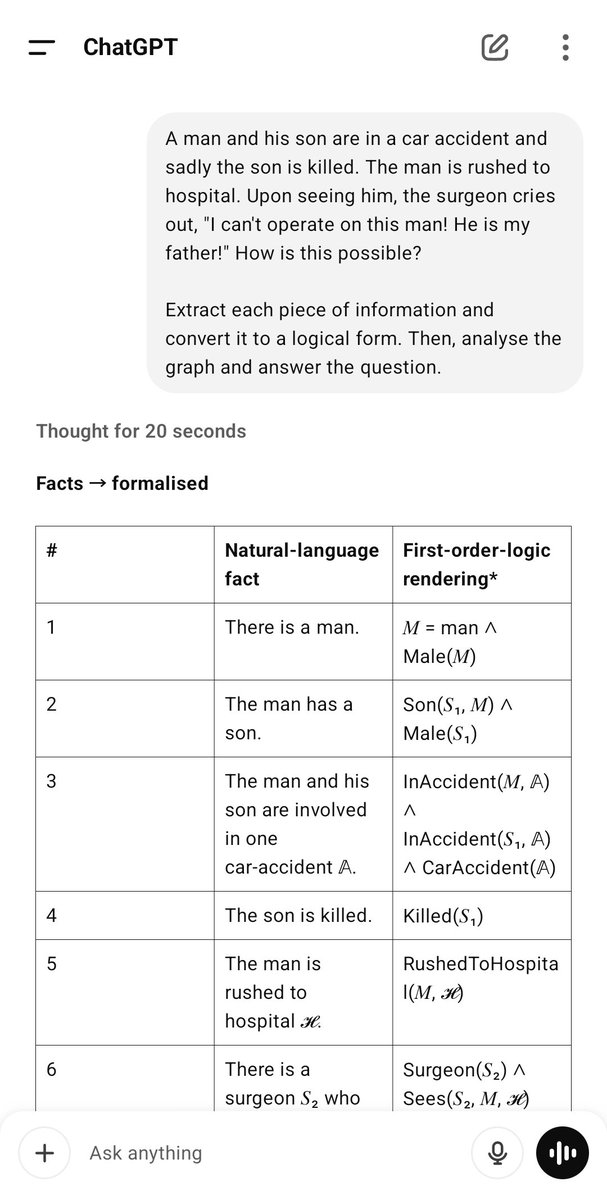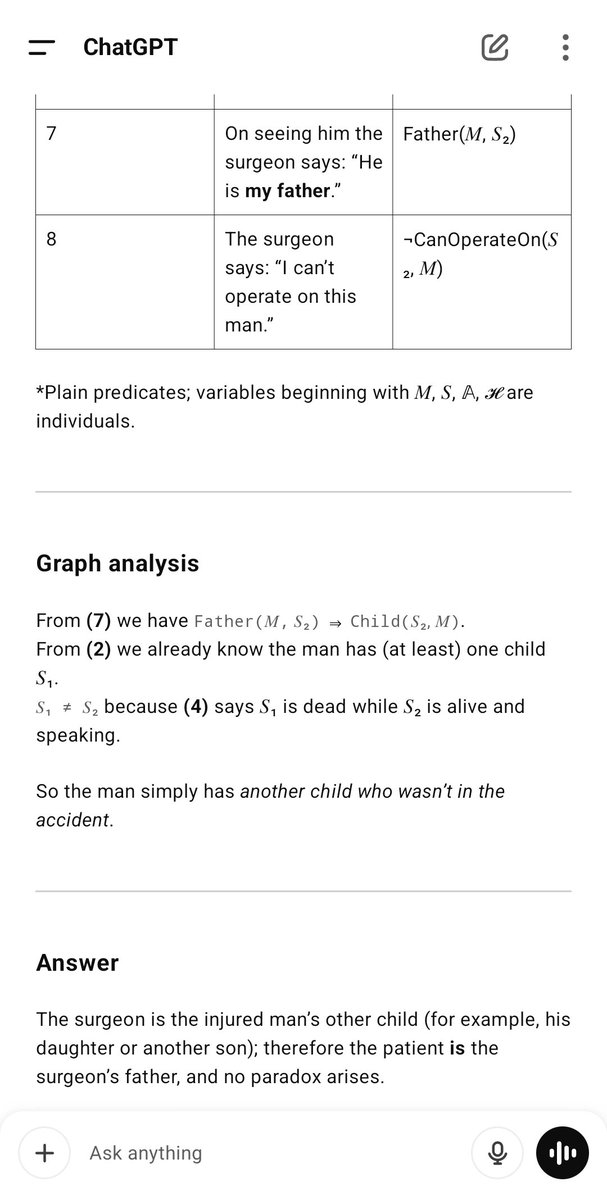1/2
@colin_fraser
At what point should it be reasonable to expect coherent answers to these? How far beyond PhD-level reasoning must we climb?

2/2
@mommi84
o3 with a simple addition to the prompt solved it. Integrated neurosymbolic reasoning is what these models need.


To post tweets in this format, more info here: https://www.thecoli.com/threads/tips-and-tricks-for-posting-the-coli-megathread.984734/post-52211196
@colin_fraser
At what point should it be reasonable to expect coherent answers to these? How far beyond PhD-level reasoning must we climb?

2/2
@mommi84
o3 with a simple addition to the prompt solved it. Integrated neurosymbolic reasoning is what these models need.


To post tweets in this format, more info here: https://www.thecoli.com/threads/tips-and-tricks-for-posting-the-coli-megathread.984734/post-52211196
a symbolic reasoning prompt:
Extract each piece of information and convert it to a logical form. Then, analyse the graph and answer the question.
Why Symbolic?
- “Convert it to a logical form”: This means representing information in a structured, rule-based, or symbolic way—such as logical statements, predicates, if-then rules, or formal language. This is characteristic of symbolic (as opposed to statistical or subsymbolic) AI reasoning.
- Analysis and Answering: Once in symbolic/logical form, manipulation and reasoning are done via logical rules, deduction, or inference—core aspects of symbolic AI.
Symbolic methods are contrasted with:
- Statistical/subsymbolic approaches (like neural networks), which rely on patterns in data, probabilities, embeddings, or numbers, rather than explicit symbols and logic.
Typical Symbolic Representations:
- Propositional logic (e.g., A → B)
- Predicate logic (e.g., isStudent(x))
- Rule-based systems (e.g., IF ..., THEN ...)
- Fact lists and ontologies